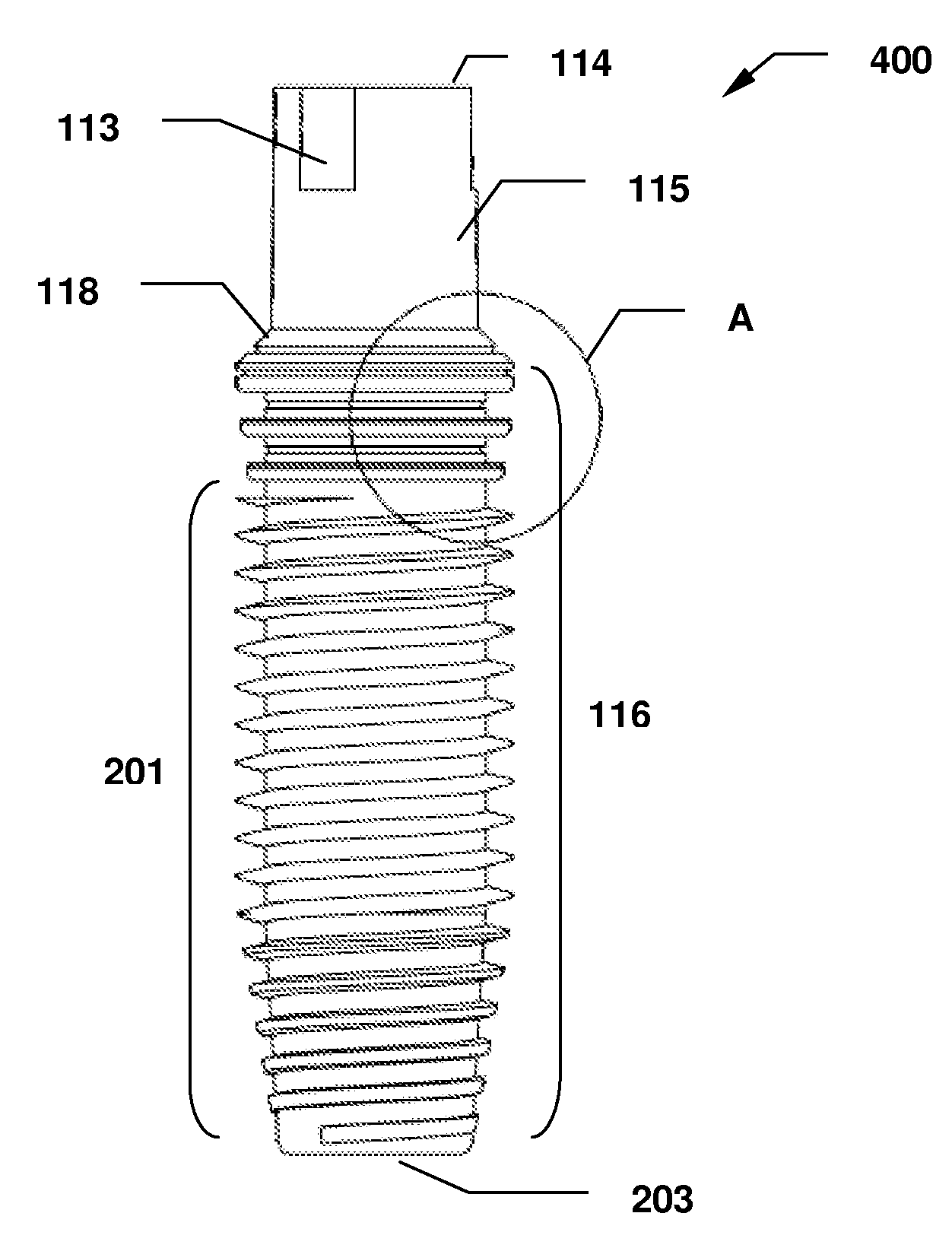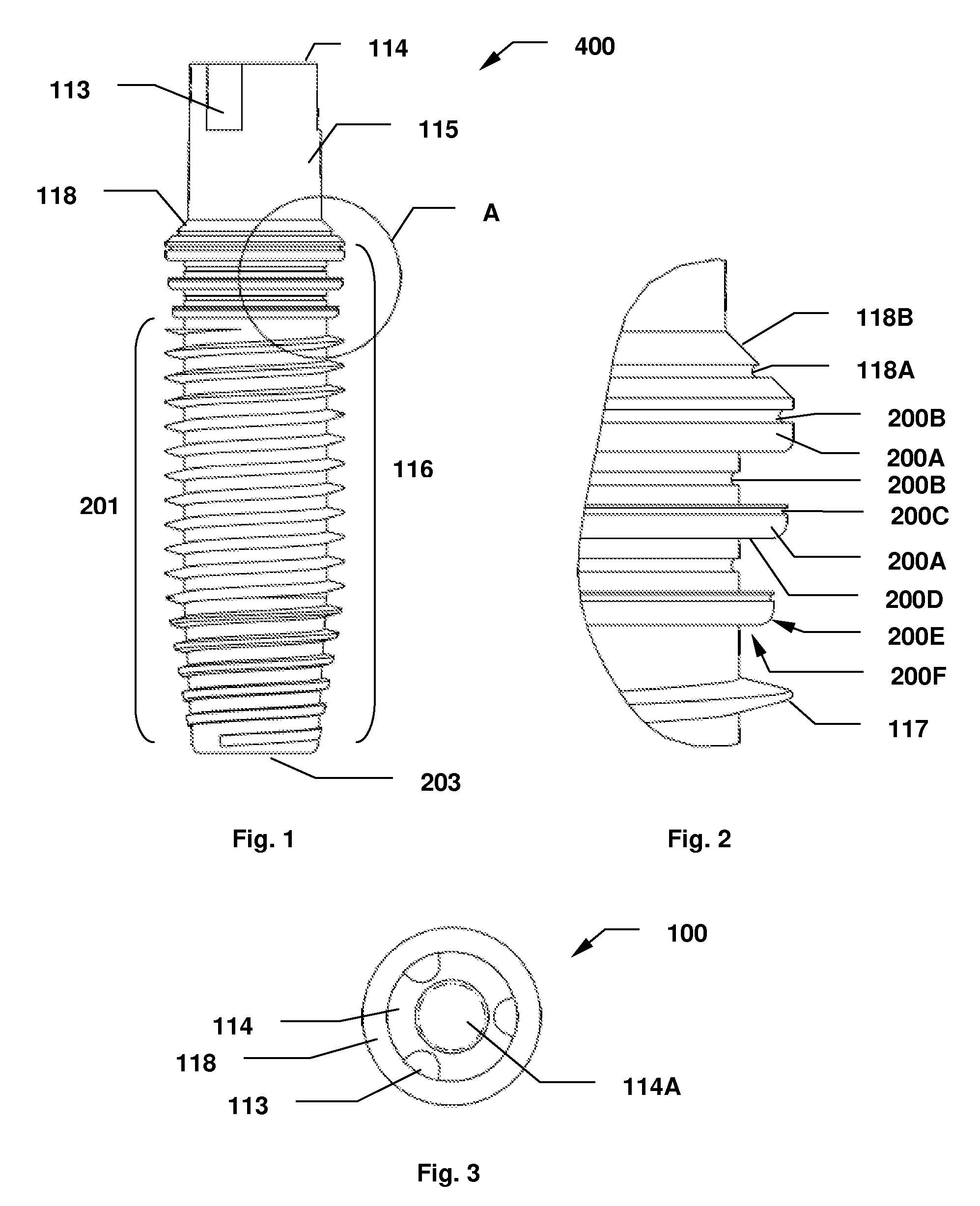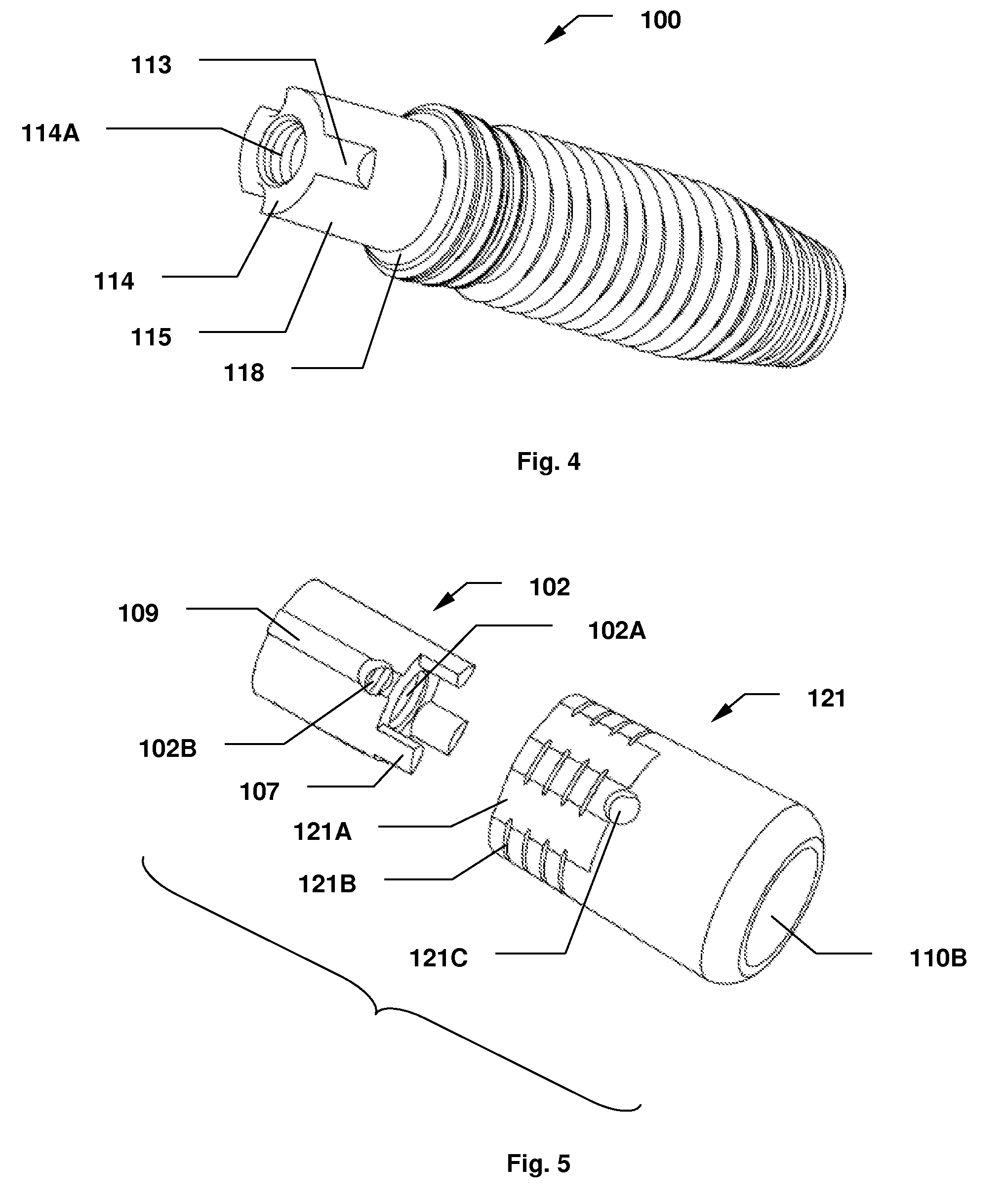Dental Implant System and Method
a technology of dental implants and taper connections, which is applied in the field of dental implants, can solve the problems of difficult to prevent the rotation of the implant abutment, insufficient tolerance in the manufacturing process, and inconvenient etc., and achieve the effect of accurate placement of the abutmen
- Summary
- Abstract
- Description
- Claims
- Application Information
AI Technical Summary
Benefits of technology
Problems solved by technology
Method used
Image
Examples
Embodiment Construction
[0055]Referring now to the drawings, in which like reference numerals are used to refer to the same or similar elements, FIGS. 3-10 illustrate the dental implant system or assembly of the present invention, which comprises a dental implant 100, a key 102, an implant abutment 121, an abutment insertion tool 205, an abutment removal tool 206 and an implant insertion and removal tool 207.
[0056]As shown in FIG. 4, the dental implant 100 is formed as an elongated body having an anchoring portion 116, an abutment receiving portion 115 and an internally threaded opening 114A of a predetermined depth, which is accessible from the top end 114 of the dental implant 100. The abutment receiving portion 115 can also be adapted to receive a prosthesis, such as a crown or a bridge, without the use of an abutment or the abutment being attached to it first. Preferably, the dental implant 100 has a cylindrical shaped body, and / or an annular shoulder 118 disposed between the anchoring portion 116 and ...
PUM
 Login to View More
Login to View More Abstract
Description
Claims
Application Information
 Login to View More
Login to View More - R&D
- Intellectual Property
- Life Sciences
- Materials
- Tech Scout
- Unparalleled Data Quality
- Higher Quality Content
- 60% Fewer Hallucinations
Browse by: Latest US Patents, China's latest patents, Technical Efficacy Thesaurus, Application Domain, Technology Topic, Popular Technical Reports.
© 2025 PatSnap. All rights reserved.Legal|Privacy policy|Modern Slavery Act Transparency Statement|Sitemap|About US| Contact US: help@patsnap.com



